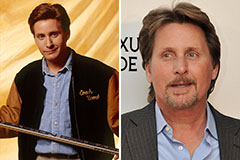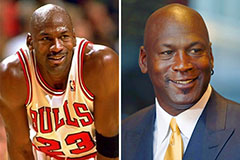The WWF Championship Belts hold a special and storied place in the annals of specialist fumbling. More than plain devices, these substantial symbols of victory stand for the peak of success, the conclusion of blood, sweat, and tears dropped within the made even circle. For years, the sight of a wrestler raising a dazzling WWF (later copyright) champion belt over their head has actually been an renowned picture, instantaneously well-known also to those with just a passing experience with the sport. These belts are not just prizes; they are physical manifestations of stories, heritages, and the ever-evolving landscape of specialist wrestling.
The history of WWF Champion Belts is as rich and vibrant as the business itself. From the very early days of the Globe Wide Wrestling Federation (WWWF) and its inaugural championship, the family tree of these titles informs a compelling narrative of wrestling's growth and transformation. The initial WWWF Championship, held by the famous Buddy Rogers, was a fairly easy style, a unlike the sophisticated and commonly customized belts these days. Yet, it laid the foundation for a tradition of symbolic equipment that would certainly involve define wrestling excellence.
As the WWWF transitioned into the WWF under Vince McMahon Sr. and later on his son, Vince K. McMahon Jr., the champion belts evolved in tandem with the firm's burgeoning popularity. The " Large Eagle" belt, associated with the Hulkamania age, became an promptly well-known emblem of fumbling's mainstream breakthrough in the 1980s. Its large, impressive eagle layout, often draped over the broad shoulders of Hunk Hogan, illustrated the epic individualities and growing popularity of the time. This age cemented the championship belt as a essential storytelling tool, a visual representation of prominence and the supreme prize that every wrestler aspired to acquire.
The 1990s ushered in a brand-new period for the WWF, marked by a change in battling design and the development of new superstars. This duration additionally saw the introduction of new WWF Champion Belts, reflecting the transforming aesthetic and the individualities holding them. The "Winged Eagle" belt, with its even more complex layout including numerous plates and a popular winged eagle, ended up being the icon of champs like Bret Hart, Shawn Michaels, and Rock Cold Steve Austin. This style is often thought about one of one of the most renowned and cherished in wrestling history, standing for a golden age for the company and its leading title.
The Mindset Age, a period of edgier storylines and defiant personalities, brought with it even more evolution in the design of the WWF Champion Belts. While the "Winged Eagle" remained for a while, the introduction of the " Cigarette smoking Head" belt, specifically made for Rock Cold Steve Austin, marked a departure from tradition. This distinct belt, featuring a head with smoke originating from its eye sockets, underscored the defiant and anti-establishment identity of among wrestling's greatest celebrities. It demonstrated the business's readiness to personalize the championship to fit the personality, more improving the storytelling capacity of the title.
The turn of the millennium and the ultimate rebranding of the WWF to copyright saw further versions of the championship belts. The "Undisputed Champion" era, complying with the acquisition of copyright, introduced a brand-new style that unified the WWF and copyright Globe Heavyweight Championships. This belt, while initially standing for a unification, at some point paved the way to the "Spinner" belt, notoriously associated with John Cena. This debatable design, featuring a huge copyright logo design that can rotate, was both lauded and slammed for its fancy and unconventional look. Regardless of viewpoint, it ended up being associated with Cena's dominant reign and the period he specified.
Beyond the major world championship, the WWF Champion Belts incorporate a range of titles, each standing for a various degree of accomplishment and expertise within the company. The Intercontinental Championship, frequently considered the "workhorse" title, has a long and respected history, held by lots of future globe champions. 1 Its numerous designs for many years have actually mirrored its importance as a tipping stone to the main event. Similarly, the USA Championship (initially a copyright title brought over after the purchase), the Tag Team Championships (with their various and typically visually distinctive designs representing the unity of a group), the Female's Championships (evolving with different layouts reflecting the growing prominence of women's wrestling), and the various "hardcore" and "European" titles (though currently obsolete) all add to the rich tapestry of WWF/copyright champion background.
1.
The prominent history of the Intercontinental Champion: copyright, Aug. 12, 2022.
www.youtube.com.
The style and construction of WWF Champion Belts are considerable facets of their appeal. Often crafted from metal plates ( commonly zinc or brass) and natural leather straps, these belts are tangible symbols of status and workmanship. The detailed describing on home plates, including company logo designs, eagles, globes, and other symbolic images, includes in their visual allure and historic importance. The weight and feeling of a championship belt are frequently defined by wrestlers as contributing to the feeling of accomplishment and authenticity associated with holding it.
The tradition of WWF Championship Belts prolongs far beyond the wrestling ring. They wwf championship belts have actually become cultural symbols, appearing in flicks, television shows, and video games. Replicas of these belts are very searched for by fans, functioning as concrete tips of their favorite wrestlers and remarkable ages. The image of a champ happily showing their belt is deeply ingrained in popular culture, representing triumph and achievement in a wider feeling.
In conclusion, the WWF Championship Belts are much more than just attractive devices. They are potent symbols of battling history, standing for the victories and tribulations of countless professional athletes that have pursued achievement within the made even circle. From the straightforward layouts of the early days to the fancy and tailored belts of the contemporary period, these titles have progressed along with the company, showing its transforming landscape and the epic personalities that have held them. The tradition of these belts continues to endure, exciting fans and solidifying their area as famous signs of specialist wrestling quality.
 Emilio Estevez Then & Now!
Emilio Estevez Then & Now! Anthony Michael Hall Then & Now!
Anthony Michael Hall Then & Now! Michael Fishman Then & Now!
Michael Fishman Then & Now! Michael Jordan Then & Now!
Michael Jordan Then & Now! Ryan Phillippe Then & Now!
Ryan Phillippe Then & Now!